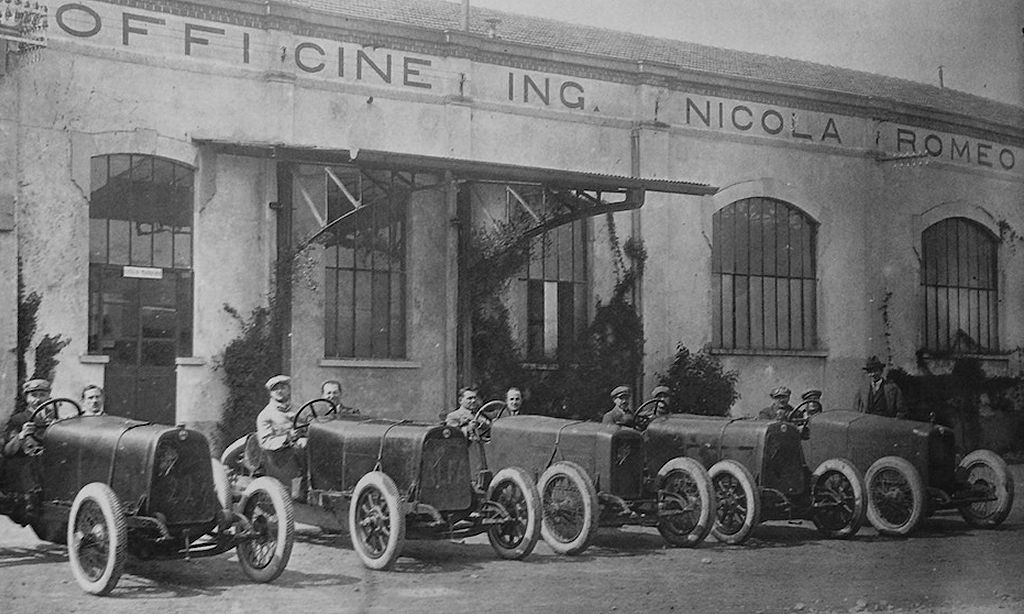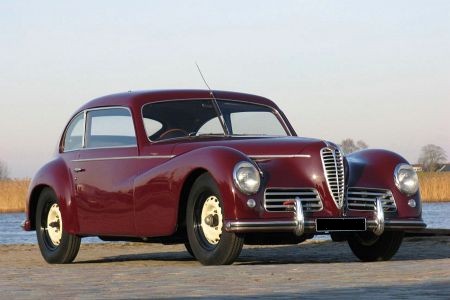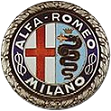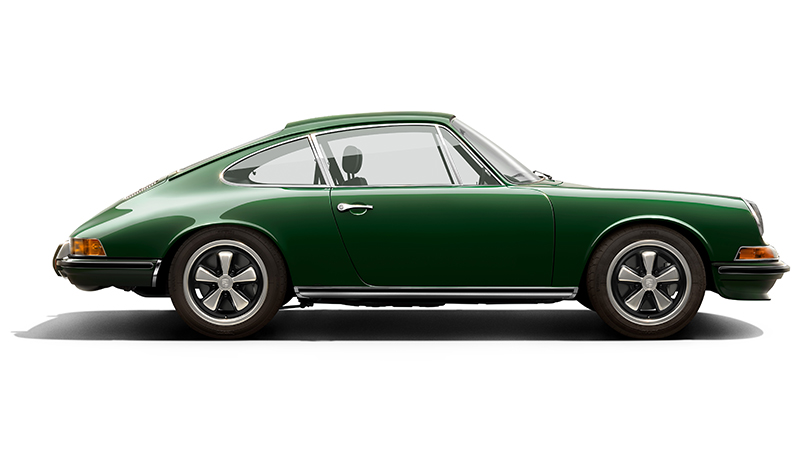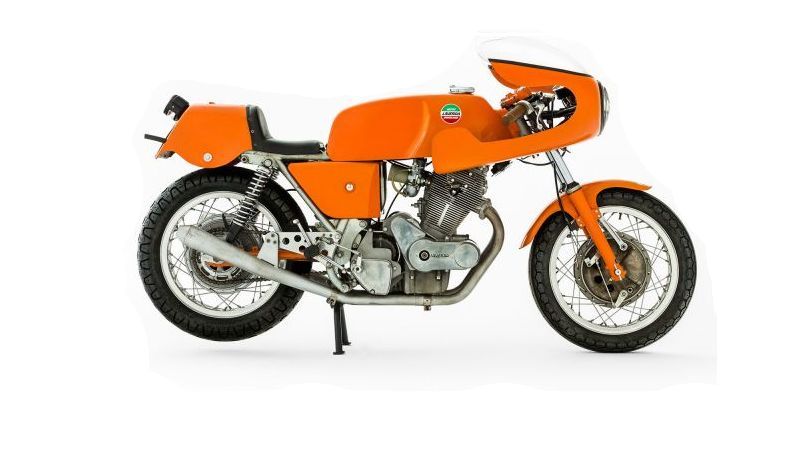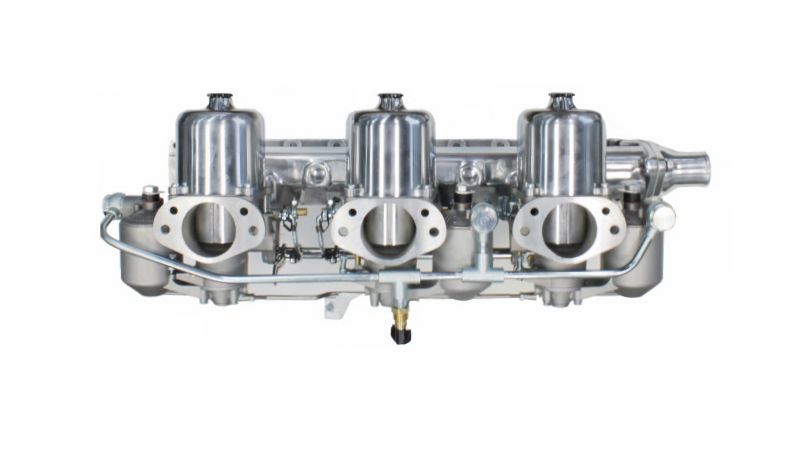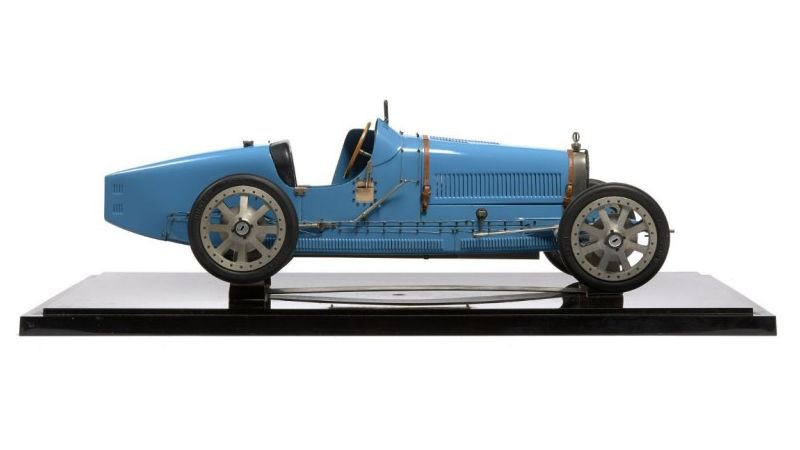Alfa Romeo Motor Cars
example Alfa Romeo successfully Sold
la Macchina
With burnished helmets gleaming in the sunlight the invincible Roman legions stormed northward out of Italy. Led by Julius Caesar they secured most of Europe by the first century B.C. and the triumphant Roman eagle became the symbol of leadership.
In the twentieth century another invasion erupted from the Italian peninsula. This time it was a series of bright red cars from Milan. With the precision and efficiency of Caesar's legions they rapidly established dominance on the race tracks of Europe.
Led by Vittorio Jano and then Enzo Ferrari, the cars of Alfa-Romeo swept past all competition. Their symbol is a peaceful badge, a coat of arms featuring a cross, but the cars were as fierce as the ancient glaring Roman eagle.
There are many who feel that Alfa-Romeo produced the greatest racing cars of all time. This claim is contested by the Bugatti addicts, but a glance at the racing records easily clarifies the issue.
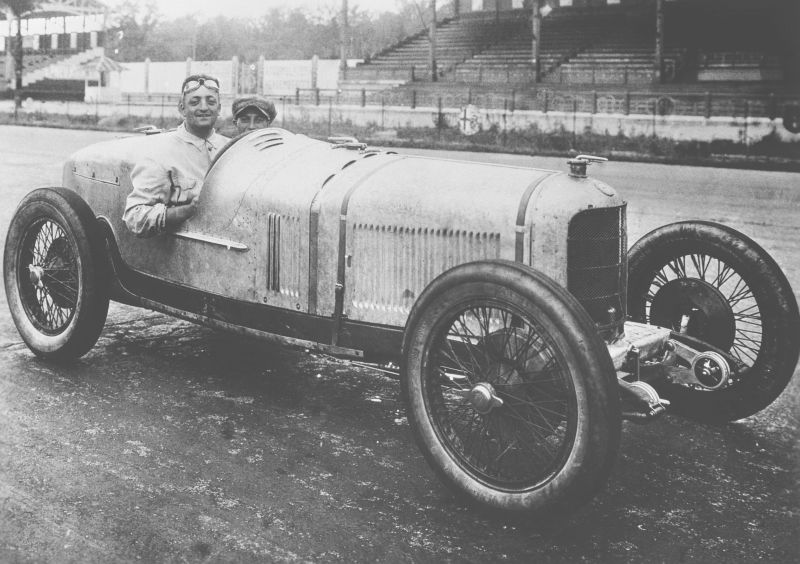
Enzo Ferrari behind the wheel of a 1924 Alfa Romeo P2
Although the Bugatti machines have won more races of all types, Alfa-Romeo, until the time the company retired from competition, established a record of victories in international Grand Prix racing that still stands above Bugatti, while Mercedes occupying third place.
The Alfa-Romeo corporation had a French beginning early in the century with Alexandre Darracq building a factory in Naples in 1906 as an assembly plant for his cars. He also established a sales and service office in Milan and began to market his machines in Italy.
This venture failed within three years and the entire outfit was purchased by a group of Italian financiers who promptly had the Darracq redesigned to their own taste. They gave the new company a rather imposing name, - Anonima Lombarda Fabbrica Automobili -
A quick scanning of the initials will reveal - A.L.F.A. - a much easier mouthful even for those who can master the rolling Italian syllables.
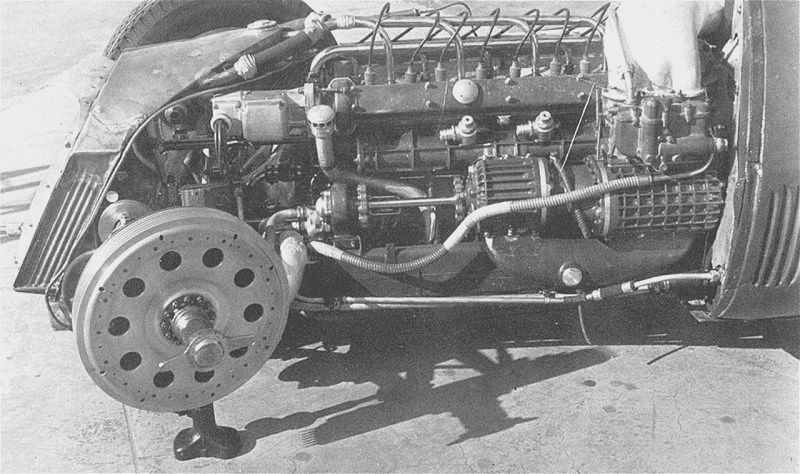
Alfa Romeo Tipo 159 Alfetta 8C 1500 Supercharged Gioacchino Colombo Engine
A later financial maneuver placed a man named Nicola Romeo at the head of the firm and by the end of World War I it sported the title of Alfa-Romeo. The racing brotherhood familiarly shortened it to Alfa, perhaps because that is just about all that could be said during the time one of the flashing red racers sped past the scoring stand.
The important racing history of the Alfa-Romeo cars begins in 1924. A year earlier the firm had hired Vittorio Jano as chief designer. He was given one basic objective - to build a prize-winning machine.
This is a job that sometimes takes many years of development, but in 1924 Jano's P2 Alfa won the world championship. From that time on Alfa-Romeo became a name to be reckoned with. In 1929 Jano introduced a supercharged sports-racing car with an engine displacement of only 1750 cc.
Three of these tiny speedsters with their classic Zagato bodies tackled the best machines that Europe could offer in the 1930 Tourist Trophy race. In a teeming rain the Italian drivers, Nuvolari, Campari, and Varzi chauffered their way through slippery turns that left the huge Bentleys and Mercedes spinning helplessly.

1938 Alfa Romeo 8C 2900 Mille Miglia Spider
When the final flag fell, the Alfas came by in the first three places. This feat made Alfa-Romeo a serious threat in the sports-car field; but as Grand Prix racing became more specialized, the old P2 could no longer stay with the new Bugattis and Mercedes.
Jano went back to his drawing board and by 1932 he produced one of the most famous racing cars ever built. It was the P3 Alfa-Romeo.
For three years this invincible car stood for Italian dominance on the race track. Just as Adolf Hitler had backed Mercedes and Auto Union, the Italian dictator, Benito Mussolini poured the funds of his Fascist state into the Alfa-Romeo factory.
Both dictators wanted prestige in the sporting world, but by 1935 the Nazis pulled ahead. Not until the flames of World War II were extinguished did Alfa-Romeo triumph again, but 1935 provided one final thrill.
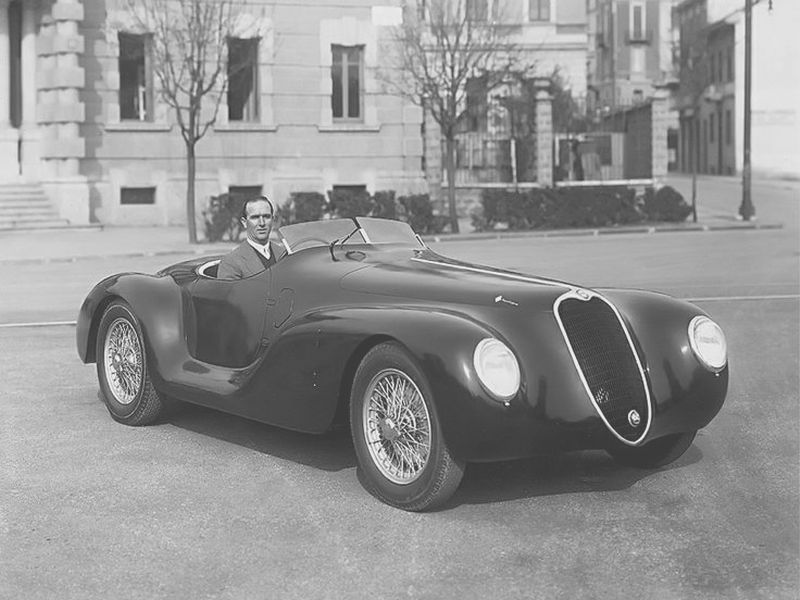
1940 Alfa Romeo 6C 2500SS Torpedino Brescia
At the Nürburg Ring race in Germany, Tazio Nuvolari wheeled his outmoded P3 Alfa into the starting line. Next to him were the shining silver cars of Auto-Union and Mercedes-Benz, each one faster than his Alfa.
But even in 1935 the name of Nuvolari was a legend. Any car with the fiery Mantuan in the driver's seat was a potential winner. It was Nuvolari who practically established modern road racing techniques.
He was one of the first to deliberately use the full four-wheel drift as a method of navigating tight corners, and in his hands a car seemed to take on his own flashing temperament.
When the race started, the old P3 Alfa was lost among the thundering German machines, but Nuvolari's split-second timing on the turns took him past one car after another.
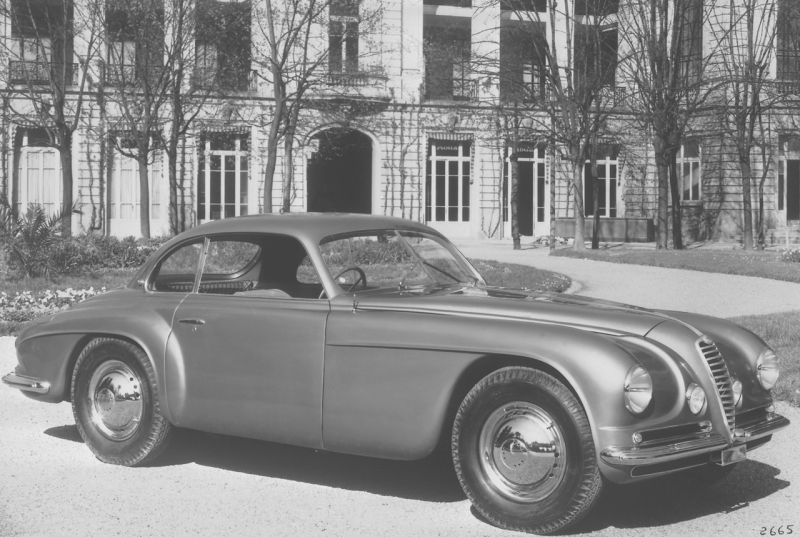
1946 Alfa Romeo 6C 2300 Villa d'Este
By the tenth lap the Mantuan was leading, but a disastrous pit stop put him back to fifth place. The gasoline pump in the pits had broken down and the Alfa had to be refueled by pouring the gas directly from the cans.
Over two minutes were lost, and when Nuvolari pulled out on the fourteen-mile course it was as though he had a brand new race to run.
But now the Italian master's skill at sliding a car through corners began to be demonstrated. He whipped his Alfa precisely through the 180 turns on the Nürburg Ring track, and lap after lap brought him closer to the front-running car.
It was a Mercedes with Manfred von Brauchitsch driving a confident race. Suddenly his pit chief flashed him a signal warning of the approaching Nuvolari. Von Brauchitsch opened the Mercedes to the limit but the cagy Nuvolari, still slicing seconds from his lap time, came nearer and nearer.
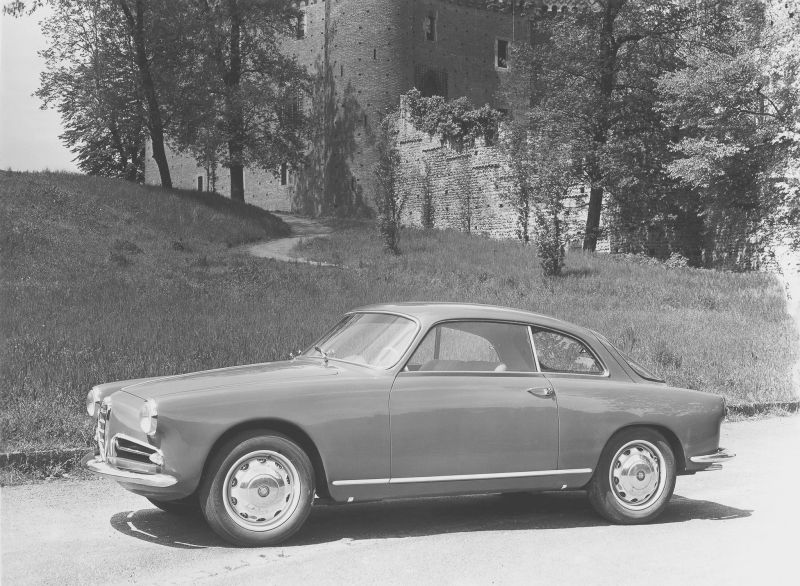
1954 Alfa Romeo Guilietta Sprint
The German slammed his car through turn after turn, stripping rubber from the tires, but Nuvolari's precise driving sent the Alfa around the corners even faster and. smoother. He knew that there were not enough laps left for him to catch the swift Mercedes, but he calculated that relentless pressure would force Von Brauchitsch to drive beyond the limits of his Mercedes.
During the final lap the German driver, now taking the Mercedes through the turns in wide screaming slides, finally stripped a rear tire. Nuvolari roared past in the old Alfa P3 and won. The contest proved that speed alone does not win races. Give a fine driver a car that will handle precisely and he will pass faster but clumsier machines.
This race was the last fling of the pre-war Alfa-Romeos but shortly after World War II a successor to the P3 Alfa appeared. This was the 158 Alfa and it immediately proceeded to win everything in sight.
In 1947 and 1948 the 158's won almost every major event, and in many races monopolized the first four places. By 1949 the firm decided to retire from racing and concentrate on consumer models. They returned to competition in 1950, raced through 1951 with the 159 Alfa and retired again.
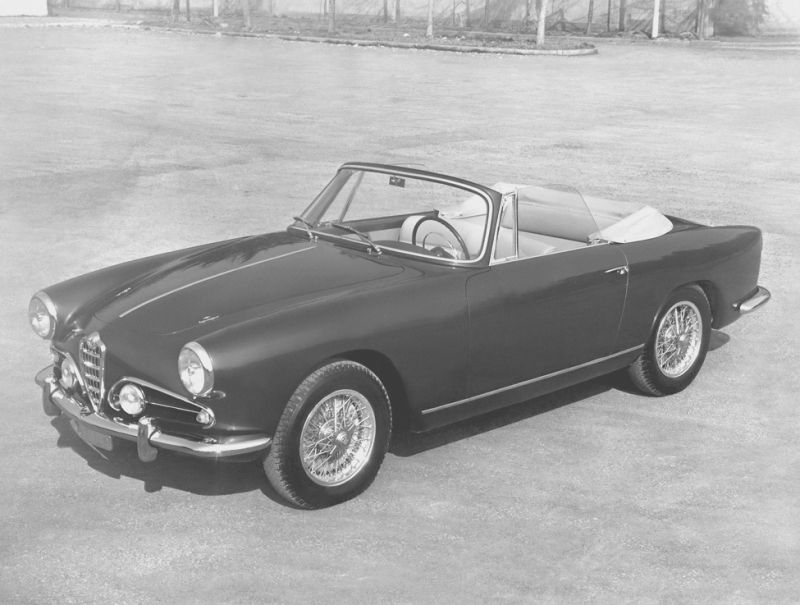
1956 Alfa Romeo 1900 Super Sprint Cabriolet
By 1960 there had not been another official Alfa-Romeo team fielded, and Alfa had not produced another Grand Prix car. But the Milan factory has turned out some of the finest sports and touring cars in the world. The Guilietta and Veloce models dominate their class in sports-car racing in much the same fashion as the old 1750 cc. did in years past.
Throughout the history of the Alfa-Romeo firm there has always been a close relationship between the racing cars and the production models. The only major differences were in the bodies. Engines remained practically the same, with road models slightly detuned for low-speed performance.
Even today, the little Giulietta with its 1300 cc. engine only needs a few adjustments to turn it into a racing car. The field of conquest for the Alfa-Romeo is much more modest these days, but just watch a group of flaming red Alfas power away from the starting line and perhaps, in some curious way, you will be reminded of the ancient Roman legions that conquered the then known world two thousand years ago.
We are looking for the following cars. If you do have any of the below listed vehicles - and you are ready to sell - please Contact Us.
| 6C |
|---|
| 1500 |
| 1750 |
| 1900 |
| 2300 |
| 2300B |
| 2500 |
| 3000 |
| Competizione |
| Compressore |
| Corsa |
| Corto |
| Freccia d'Oro |
| Gran Sport |
| Gran Turismo |
| Lungo |
| Mille Miglia |
| Normale |
| Passo Ridotto |
| Pescara |
| Sport |
| Sport Pinin Farina |
| Super Sport |
| Testa Fissa |
| Turismo |
| Villa d'Este |
| 8C |
| 2300 |
| 2900 |
| Mille Miglia |
| Monza |
| Tipo 33 |
| Stradale |
| 1900 |
| CS |
| CSS |
| SSZ |
| 2600 |
| SZ |
| Giulietta |
| SS |
| SZ |
| Giulia |
| GTA |
| GTC |
| Junior Zagato |
| 1300 |
| 1600 |
| Divers |
| TZ1 |
| Montreal |
We buy, sell, broker, locate, consign and appraise exceptional classic, sports and collector Alfa Romeos'
Contact us when you are serious about buying a fine Alfa Romeo Motor Car or to arrange a free and confidential valuation with a view to selling.
